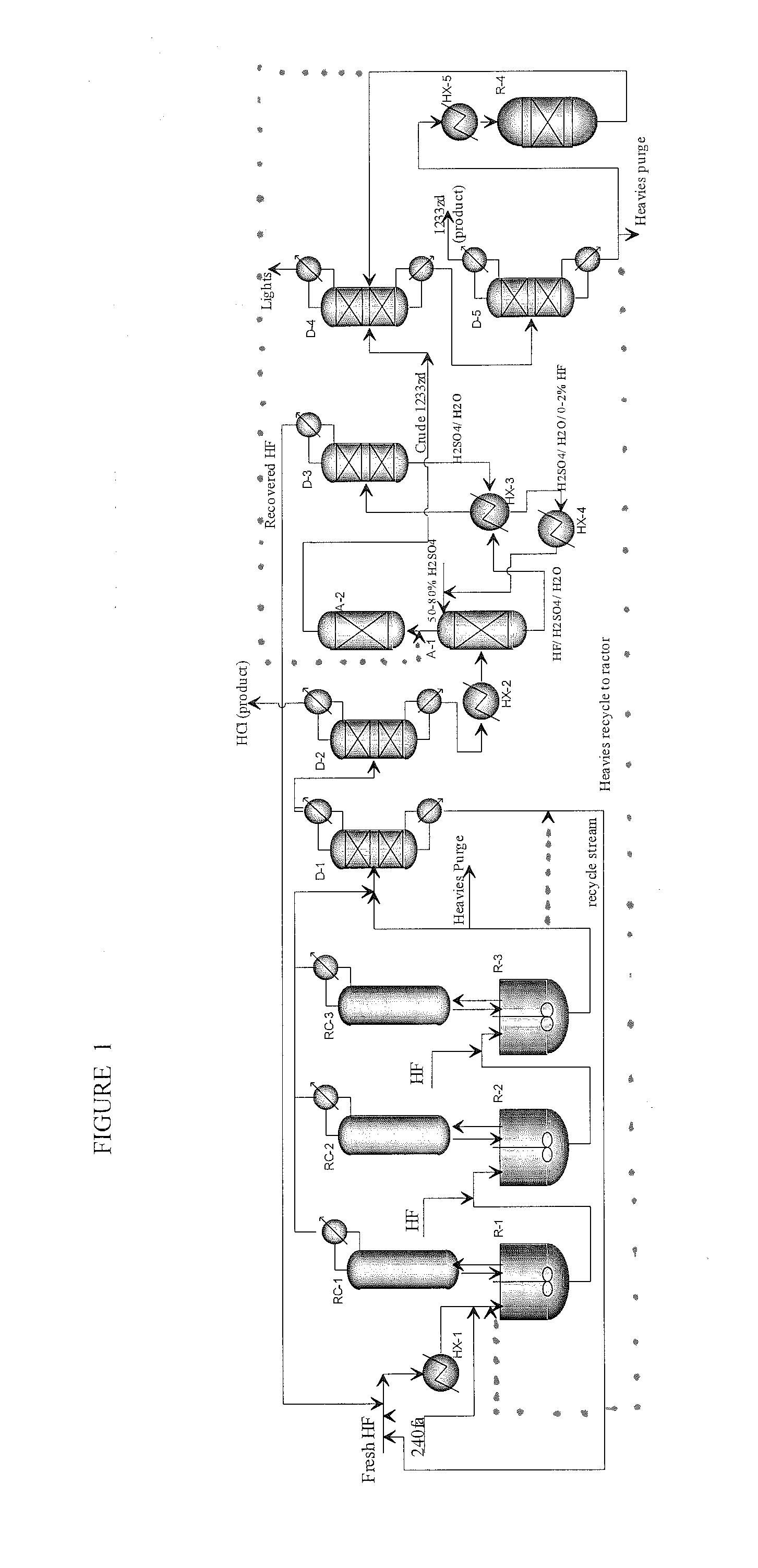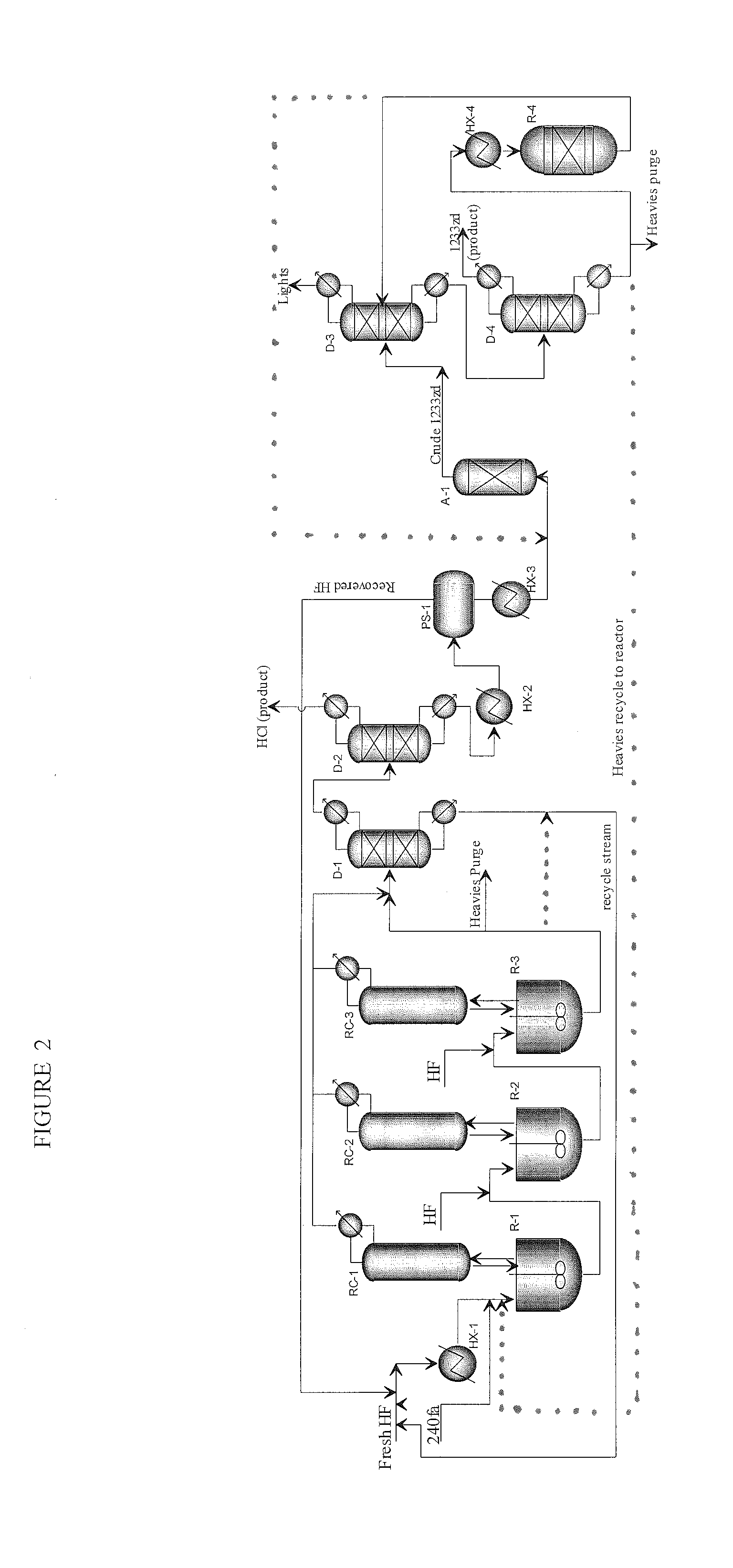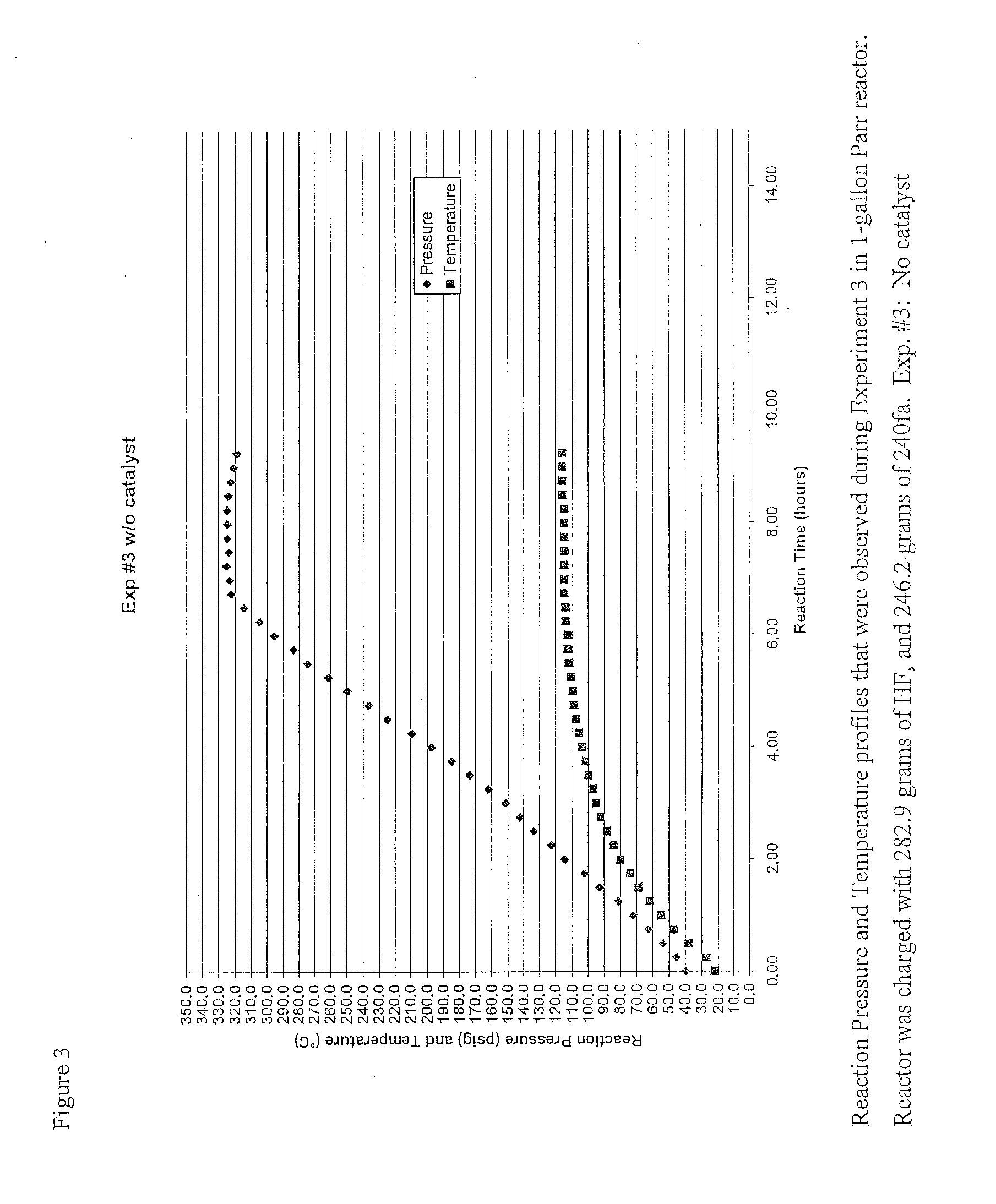Continuous low-temperature process to produce trans-1-chloro-3,3,3-trifluoropropene
a technology of trifluoropropene and chlorofluoroolefin, which is applied in the field of hydrochlorofluoroolefin production methods and systems, can solve the problems of slow reaction rate and achieve the effect of slow reaction ra
- Summary
- Abstract
- Description
- Claims
- Application Information
AI Technical Summary
Benefits of technology
Problems solved by technology
Method used
Image
Examples
example 1
[0103]As part of the development of a liquid phase process for making 1233zd(E) an experiment was run using no catalyst. The experiment used a one gallon agitated Parr reactor and was run in a batch mode. The experiment was called Exp #3. For the experiment 282.9 grams of HF and 246.2 grams of HCC-240fa (1,1,1,3,3-pentachloropropane) (12.4 to 1 mole ratio HF:240fa) were charged to the reactor at room temperature. The mixer was then turned on ensuring the reactor contents were well mixed. Then the reactor was heated to the desired temperature. Upon heating the pressure began to rise as HCl by product was produced as a result of a fluorination reaction. The reactor was heated to about 110° C. over several hours and held. The pressure was controlled in the range of 250 psig to 325 psig by venting off the HCl generated in the reaction to a dry-ice trap (DIT).
[0104]At the completion of the reaction after about 9.5 hrs., (determined by lack of HCl generation), the pressure from the reacto...
example 2
[0107]The experiment described in Example 1 was repeated using the same equipment and procedure. The reactor was heated to 110° C. and held. However, the experiment was not allowed to go to completion. The experiment was called Exp #5. After about 6.5 hrs. the reactor pressure reached 320 psig and the experiment was stopped. 382.7 grams of HF and 244.1 grams of HCC-240fa were initially charged to the reactor. Results are similar to those of Example 1, but with a lower conversion of HCC-240fa.
[0108]Experimental conditions and results of GC analysis of the reaction products are presented in the FIG. 4 and Table II below.
TABLE IICharged to reactorWeight (moles)HF392.7 grams (16.485 moles)240fa244.1 grams (1.129 moles)Collected reaction productsWeightVolatile products form DIT76.1 grams(5.66 GC % 245fa, 88.90 GC % 1233zd(E),1.12 GC % 244fa, 2.75 GC % 1233zd(Z))Heavies from reactor121.4 grams (1.713 GC % G-242, 58.691GC % G-241, 39.596 GC % G-240fa)
example 3
[0114]This example illustrates the initial reactor running in continuous mode. Experiments were performed in a 1-gallon agitated Parr reactor equipped with 2″-ID×8-feet column filled with ¼″ ProPak packing and a tube-in-tube condenser. The reactor was heated by external 1.5 kW electric heater and the condenser was cooled by water. Reactor pressure was controlled by venting reactor products to caustic scrubber (10 wt % KOH circulating at 55° C.) and then collecting in a chilled product collection cylinder. 240fa was fed to the vapor space of the reactor and HF was fed via dip-tube to the bottom of the reactor to facilitate mixing of the reactants.
[0115]Prior to start-up, the empty reactor was charged with 3 lbs of HF. 240fa feed was introduced at 0.62 lbs / hr after the reactor was heated to about 105° C. Introduction of 240fa feed resulted in a pressure increase in the reactor indicating the initiation of the fluorination reaction and formation of HCl. 2.5 hours after 240fa feed was i...
PUM
 Login to View More
Login to View More Abstract
Description
Claims
Application Information
 Login to View More
Login to View More - R&D
- Intellectual Property
- Life Sciences
- Materials
- Tech Scout
- Unparalleled Data Quality
- Higher Quality Content
- 60% Fewer Hallucinations
Browse by: Latest US Patents, China's latest patents, Technical Efficacy Thesaurus, Application Domain, Technology Topic, Popular Technical Reports.
© 2025 PatSnap. All rights reserved.Legal|Privacy policy|Modern Slavery Act Transparency Statement|Sitemap|About US| Contact US: help@patsnap.com



